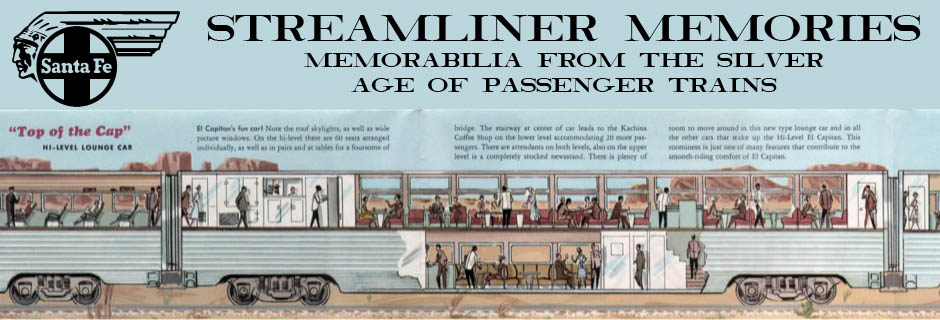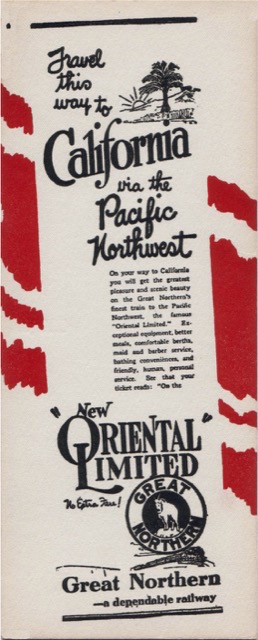All but one of these blotters are from the Great Northern archive at the Minnesota History Center, so I can confidently date them to 1928. Since the history center does not allow the use of scanners, I copied these using a camera, which leads to some slight distortion near the right and left edges.
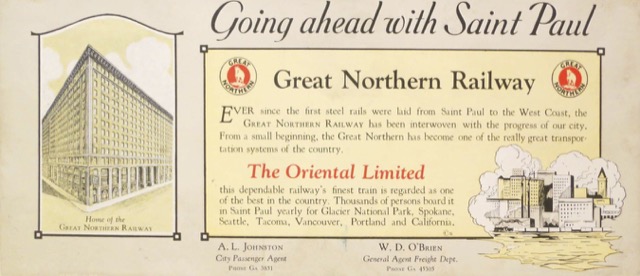
Click image to download a 295-KB PDF of this blotter.
The first one seems designed to appeal to provincial interests in St. Paul, whose residents no doubt felt a strong rivalry with Minneapolis and, to a lesser extent, Milwaukee. Unfortunately, GN’s main competitor, Northern Pacific, was also headquartered in St. Paul, and in fact in the same building shown on the left side of this blotter.
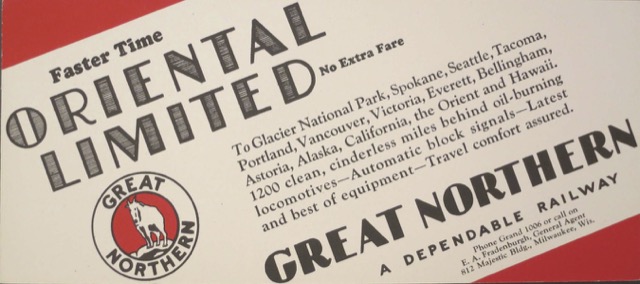
Click image to download a 279-KB PDF of this blotter.
Four years after introducing the “new Oriental Limited,” this blotter advertises that the train operates on a “faster time.” The 1928 timetable shows that the train required 68 hours to go from Seattle to Chicago and 68-1/2 hours in the other direction. I believe the train required 70 hours in 1924, which meant the railroad shaved just a couple of hours off of the schedule.
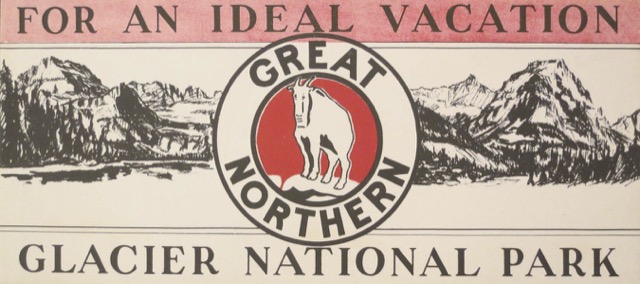
Click image to download a 348-KB PDF of this blotter.
“Old Bill,” the mountain goat who preceded Rocky as the Great Northern goat, certainly had a long face. Perhaps that’s why Rocky replaced him in 1936–he was definitely more cheerful.
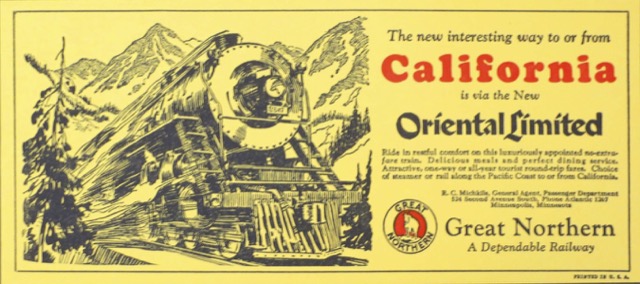
Click image to download a 360-KB PDF of this blotter.
This blotter touts the Great Northern route to California as the “interesting way.” Certainly, the bright yellow color of this blotter was interesting. Unlike the other blotters shown above, which are pink or blue on the back, this one is yellow all the way through.
This blotter from the Dale Hastin collection also invites people to take the “new” Oriental Limited to California via the Pacific Northwest. This is from the Dale Hastin collection, so I can’t say for sure what year it was issued, but the reference to the “new Oriental Limited” indicates the blotter dates from 1924 to 1928.
